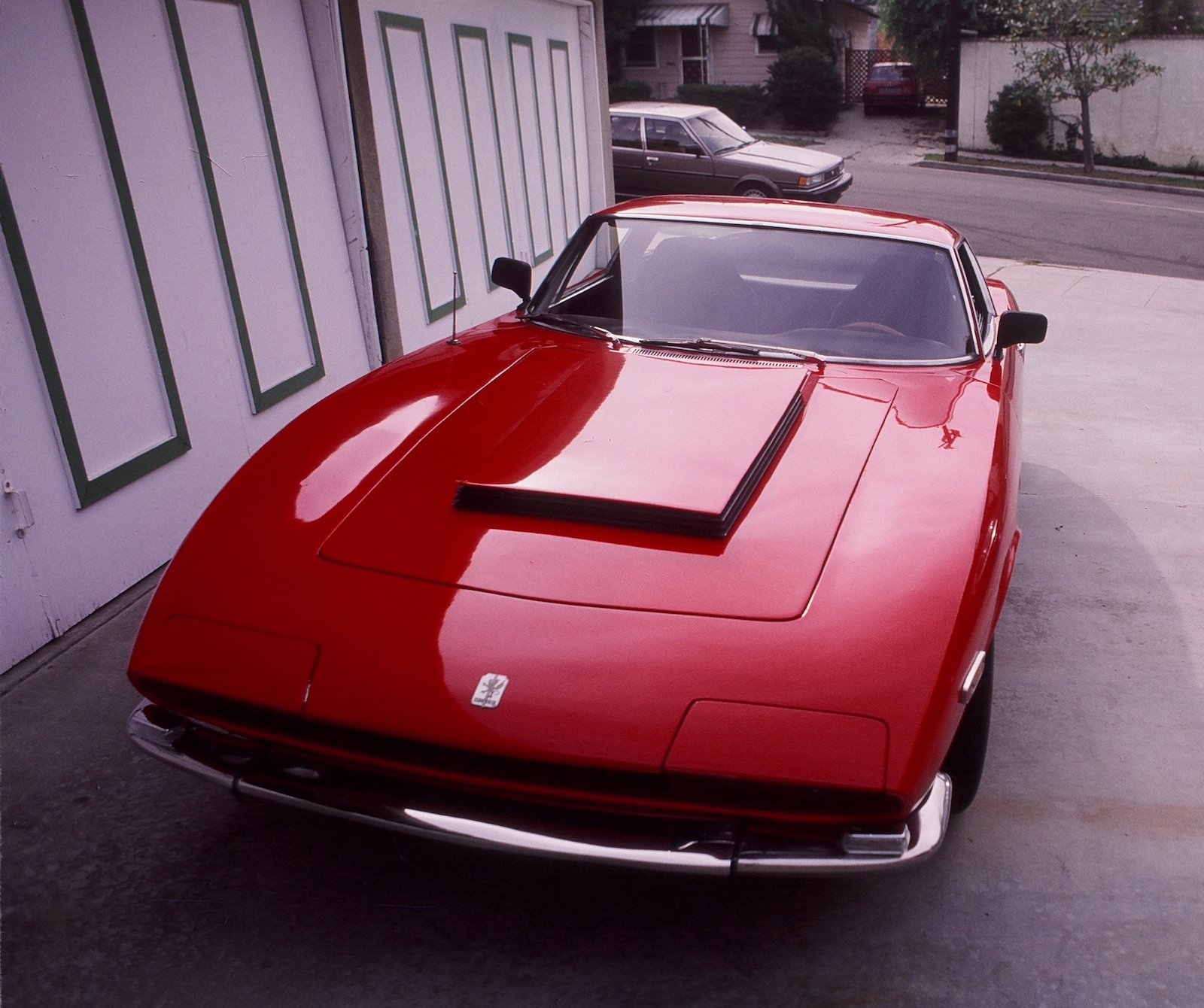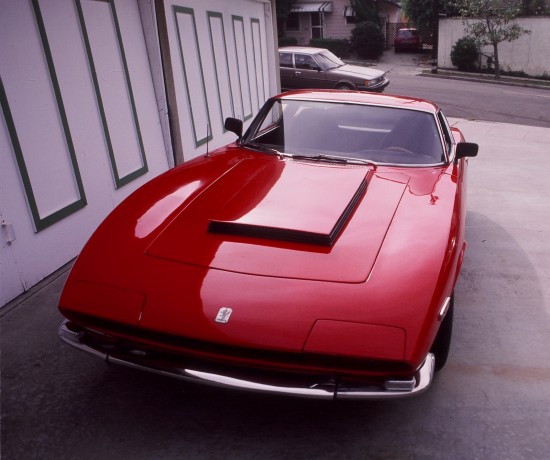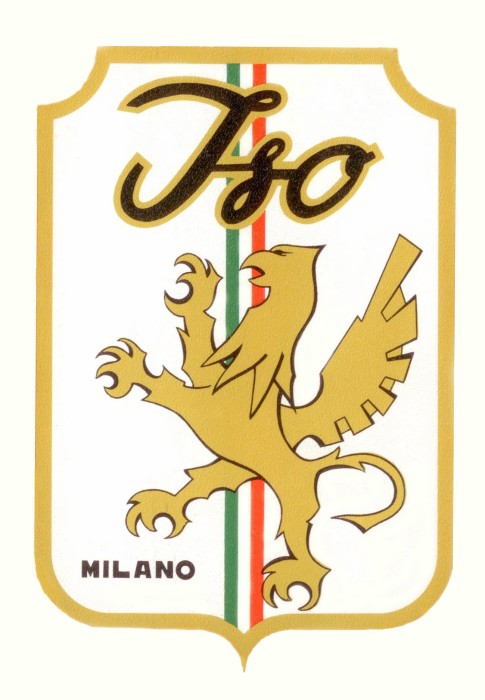by Mike –
Wallace Wyss author of the “Incredible Barn Finds” series (Enthusiast Books, Hudson, WI) says he would like to write about his former red 351-Ford powered Iso Grifo 5-speed Series 2.
Wyss says,
I bought the car from a banker in Inglewood, California who was retiring from the bank to move to Mexico. I had previously seen the car on a used car lot on Santa Monica Blvd. called The Toy Store. I think I paid around $14,000 and sold it for $16,000 only a couple of weeks later or so in the parking lot of the Barrett-Jackson auction in Scottsdale.
What Wyss wants to know now is who bought it, whether it was subsequently restored, how much the restoration cost in general and what the car is valued at today?
He also can’t remember what year this happened, or even how he found out about the car other than seeing it on the used car lot for months but somehow after it left there, he bought it.
This doesn’t seem so complicated – I am sure someone out there can help out Mr. Wyss.
Anybody who has a memory of the car can reach him at Photojournalistpro@gmail.com.
Here is his story.
My Iso Grifo Excellent Adventure – text and photos by Wallace Wyss
From small beginnings great things can happen. That’s the story of the Iso Grifo sports car, one of the most beautiful to come out of Italy.
Ironically its maker, Renzo Rivolta, was president of a company called Iso that made refrigerators. When the Suez crisis happened in the mid-50s, where Europe couldn’t get oil because the Suez canal was blocked by sunken ships, he helped Iso save the day by coming out with a tiny car called the Isetta. The Isetta was licensed to BMW and a few other car makers. That’s what got Iso into car making. Eventually Europe recovered and Rivolta could think about sports cars.
His first sports model was actually a four seater, called the Iso Rivolta IR300; which he got the idea of building after seeing what Bertone had done for a British firm called Gordon-Keeble. That car was designed by Giorgetto Giugiaro, had a Corvette 327 engine. After sampling the power in that car he decided to make a competitor.
He hired Ing. Giotto Bizzarrini, one of the half dozen Ferrari engineers who had walked out on the Old Man in 1961.
Bizzarrini did the chassis design but Giugiaro, still at Bertone, did the body design and Bertone built the coachwork. After the four seater was in production Rivolta went directly after Ferrari with the two seater Iso Grifo. Actually there were two versions, the A3/L (“L” for luxury) and the A3/C for racing (“C” for Corsa) but they were both too racy and used expensive and easily dented aluminum coachwork. And Bizzarrini was ragging on him to go racing. So there was a parting of the ways, Bizzarrini going off to produce the low slung cars under his own name in Tuscany while Rivolta went back to Bertone and commissioned Bertone to do a steel-bodied coupe with more headroom.
The Grifo A3/L prototype made its debut at the Turin Auto Show. The Corvette engine came in the buyer’s choice of 300 or 350 hp and was mated to a Borg Warner 4-speed toploader. One source says the engines were blueprinted but I doubt this. I think when it came to the Bizzarrini-built race cars that was true, but I have never seen pictures of Iso tweaking the engines.
After first showing a coupe and then making minor changes on it for production (such as eliminating the hood scoop and the stainless steel on the B-pillar) Rivolta also showed a one-off Grifo A3/L Spyder at the Geneva auto show. The production of Iso Grifo GL coupes started in 1965. The Spyder never made production. Later body variations included the 97th car made, a targa top, one of thirteen Series 1 Targas ever built. Those had open headlights. For the closed headlight Series 2 cars, only four Series 2 Targas were built.
But some buyers didn’t care about open air cars, they wanted power. So in 1968 the Corvette 427 engine was made available and the Grifo 7-Litri was introduced with a Tri-Power version of the big block Chevy. A hood scoop was needed because of the engine’s height. It was rated at 435 hp (324 kW) at 5800 rpm and the factory claimed it could reach a top speed of 300 km/h (186 mph), which was damn near what a Lamborghini Miura could do and also topped the Ferrari 365GTB/4 Daytona.
The Series 2 versions boasted a subtle Giugiaro “refresh” of hidden headlights, a styling change made to make it look contemporary with the Ferrari 365GTB/4 Daytona which signaled the end of round headlights as a styling touch on a “modern car.” The name of a racing series, the Can Am, was used for the IR-9 “Can Am” version which had a 454 big block Chevy. Production of all Isos stopped in 1974.
In that last year of production, the Iso company fell afoul of GM as an engine supplier. One rumor is that GM had decided to work with Erich Bitter who wanted to build a production version of a car designed by GM’s Chuck Jordan, the Opel CD. It would use a Chevy 327. So somehow Iso was left in the lurch while Bitter got the red carpet rolled out. At any rate the company was having trouble getting in line with U.S. emissions and safety laws so they failed. But greasing the skids was the fact another Arab oil crisis occurred, with the oil producers in the Mideast not shipping oil, so the bottom fell out of the exotic car market. 413 Iso Grifos were built in total.
My 351
My 351, the model called the IR-8, came into my life in the early ’80s after I saw it on a used car lot in West Los Angeles called The Toy Store. It was a red Series 2 5-speed of which only 34 were built (both manual and automatic transmission). The transmission was the same one used in the Aston Martin and it had factory mag wheels instead of chrome wire wheels. The outstanding feature was what I call the “wedding cake” hood, a tall hood hump with louvers on the sides so the engine compartment could vent out hot air.
I was unable to buy it off the used car lot and forgot about it until, possibly through the Iso & Bizzarrini Owner’s Club, of which I was an early member, I found out a banker near my home in Westchester, CA owned the car. I met him and he said he was retiring in Mexico and no longer needed the car. I think I bought it for $14,000, for my client in New York City, who bought and sold cars like they were baseball trading cards. The Barrett-Jackson auction was coming up in only a couple weeks so I took the car to Solo Engineering in North Hollywood, owned by a guy who owned a 427 Cobra so I knew he knew Fords. I said “get it ready to drive to Arizona” and for only about $200 he got it ready — amazing me.
I went to the auction and left it in the parking lot with a note. Someone called me at my hotel, I gave the number to my patron, also at the auction and I don’t recall at all how I got back to Los Angeles but the car was out of my life from the moment I turned over the keys to my patron.
Now, lessons learned: I was a total dummy for not realizing this was a much better car to own than the Ferrari 365GTC/4 I owned at the time. For one thing the engine cost peanuts to fix, it was just as fast and far far more exclusive (over 400 GTC/4’s were built). Due to the low maintenance cost of an American V8, I could have retained it during the lean times to come (hey, take it from me, don’t become a free lance writer, income is, uh, severely variable).
Today I estimate an Iso Grifo IR8 in the “street restoration” that I owned it (looks good from 30 feet) is worth a good $250,000. Of course, we are talking 35 years later but think of how far I could have driven it (so what if I wore out a couple 351 small blocks) in the meantime.
Second lesson: when you see a car on a used car lot, if it’s beyond your reach, try to find out if it’s on consignment and if so, who owns it. Keep records in a place you won’t lose them (at present I am using an aluminum bound address book so it’s not easily discarded) and periodically check if the real owner still has the car at that lot or where it is at the moment.
Third lesson: join a club affiliated with the marque. I know the club made rosters and I don’t remember if I saw the car pop up on a roster or saw the car around town as I lived only two miles from where I bought it.
And so it goes. It hurts me to see a long nose Grifo to think I had one in my hands, signed off title and keys, and didn’t realize what a treasure it was until it went … hey, you learn from my mistake.





Speak Your Mind